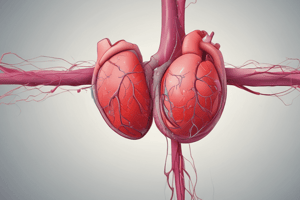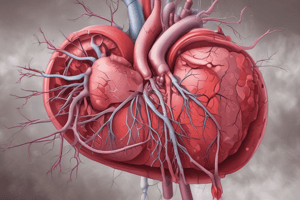Podcast
Questions and Answers
Which symptom is common in both pulmonary embolism and pneumonia?
Which symptom is common in both pulmonary embolism and pneumonia?
What is a management option for thoracentesis?
What is a management option for thoracentesis?
Which symptom is not typically associated with cardiac angina?
Which symptom is not typically associated with cardiac angina?
What is a recommended management approach for heart failure?
What is a recommended management approach for heart failure?
Signup and view all the answers
What is an important consideration for electrolyte and acid-base balance?
What is an important consideration for electrolyte and acid-base balance?
Signup and view all the answers
Pulmonary embolism can be managed with percutaneous coronary interventions.
Pulmonary embolism can be managed with percutaneous coronary interventions.
Signup and view all the answers
Thoracentesis involves inserting a needle into the lungs to release excess air.
Thoracentesis involves inserting a needle into the lungs to release excess air.
Signup and view all the answers
Heart palpitations are not a symptom of pulmonary embolism.
Heart palpitations are not a symptom of pulmonary embolism.
Signup and view all the answers
Pneumonia can be managed with DVT prophylaxis.
Pneumonia can be managed with DVT prophylaxis.
Signup and view all the answers
Cardiac angina is characterized by abdominal bloating.
Cardiac angina is characterized by abdominal bloating.
Signup and view all the answers




